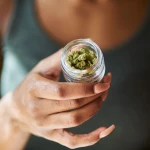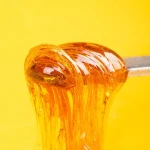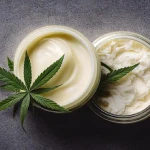Whether you are a seasoned cannabis connoisseur or just getting into marijuana, canna-oil is a versatile and convenient way to incorporate cannabis into your favorite culinary creations. In this guide, we’ll cover everything you need to know about making canna oil at home, how to use it in your cooking, and even answer some common questions along the way.
What is Canna-Oil?
Canna oil, also known as cannabis cooking oil, is an infused oil made by heating cannabis flower in a carrier oil to activate the cannabinoids. The resulting product can be used in a variety of recipes to add a medicinal or recreational kick to your dishes. This versatile and flavorful infusion can elevate a wide range of dishes into delicious cannabis-infused creations, adding a potent and enjoyable kick to your favorite snacks, meals, and desserts. While canna-oil is available for purchase at dispensaries, it can also be easily made at home by infusing a carrier oil with cannabis flower. This DIY process allows you to extract valuable compounds such as cannabinoids and terpenes from the plant material and suspend them in the oil. Because it comes from the marijuana plant, canna-oil is vegan and gluten-free, making it friendly to many dietary restrictions. Whether you prefer to purchase it or create it yourself, canna-oil offers a convenient and enjoyable way to incorporate the benefits of cannabis into your culinary creations
How to Choose Your Carrier Oil
When making canna-oil, selecting the appropriate carrier oil is crucial to achieving the desired flavor and consistency in your infused creations. Popular options such as coconut oil, olive oil, and vegetable oil offer unique tastes and textures that can enhance your recipes. Many cannabis enthusiasts choose their oil based on factors like flavor profile and smoke point – for example, olive oil adds a distinct taste but has a lower smoke point compared to avocado oil. High-fat oils like olive oil and coconut oil are ideal for creating canna oil as they effectively bind with cannabinoids like THC and CBD, making them more bioavailable for the body to absorb. The fat-soluble nature of cannabinoids means they need to be paired with lipid-rich oils to maximize their potency and effects. Without sufficient fats, the cannabis compounds may not be properly absorbed by the body, diminishing the overall experience. So, when crafting your canna oil, be mindful of selecting high-fat oils to ensure optimal infusion and enjoyment in your culinary endeavors.
What You Need to Make Cannabis Oil
- Gather 1/4 ounce of cannabis flower and 1 cup of carrier oil like coconut, olive, or vegetable oil.
- Use a double boiler or slow cooker to infuse the cannabis flower with the oil.
- Strain the mixture using a cheesecloth or fine-mesh strainer to separate the plant material from the oil.
- Store the finished cannabis oil in a glass jar or airtight container.
- For optimal potency, start with a 1:1 ratio of decarboxylated cannabis flower to cooking oil.
- Utilize cooking tools such as a non-stick baking sheet, double boiler, mixing bowl, and cheesecloth for the extraction process.
- Monitor the temperature using a cooking or candy thermometer to ensure proper infusion.
- Transfer the infused oil to a glass bowl and store it in an airtight container for future use.
DIY Cannabis Cooking Oil Recipe in Few Steps
- Step 1: Decarboxylate the Flower
- To start making your own cannabis cooking oil, begin by decarboxylating the flower. Preheat your oven to 240°F and spread the ground cannabis on a baking sheet. Bake for 40-50 minutes, stirring occasionally for even heating.
- Step 2: Prepare the Double Boiler
- In a double boiler, heat the carrier oil on low heat. Make sure the oil does not boil or burn.
- Step 3: Add Cannabis
- Add the decarboxylated cannabis to the heated oil and stir to combine. Simmer the mixture on low heat for 2-4 hours, stirring occasionally.
- Step 4: Heat
- Keep the mixture at a low heat to infuse the cannabis into the oil. The longer you simmer, the more potent the oil will be.
- Step 5: Strain & Store the Oil
- After the infusion process is complete, strain the oil using a cheesecloth or fine-mesh strainer, ensuring that no plant material remains in the final product. This step is crucial for achieving a smooth and clear cannabis cooking oil. Once strained, transfer the finished canna-oil into a glass jar or airtight container. Store it in a cool, dark place to preserve its potency and flavor for future use.
How to Use Cannabis Cooking Oil
Cannabis cooking oil opens up a world of possibilities in the kitchen. From adding a teaspoon to your morning smoothie for a medicated boost to using it as a base for salad dressings or sautés, the options are endless. Whether you’re baking sweet treats or cooking savory dishes, incorporating canna-oil adds a unique twist to your recipes. And if you’re feeling adventurous, you can even use it as a massage oil or lubricant. With cannabis cooking oil, you can elevate your culinary creations and explore the many ways to enjoy the benefits of this versatile ingredient.
How to Store Your Cannabis Oil
To preserve the potency of your canna-oil, store it in a cool, dark place away from sunlight and heat. It can be kept for several months, so make a batch ahead of time to have on hand for all your cooking needs.
Answering FAQs about Cannabis Cooking Oil
- Can I freeze canna oil?
- Yes, you can freeze canna oil without compromising its quality or potency. Freezing cannabis oil helps prevent the fats from going rancid, ensuring its longevity and effectiveness.
- Should I use cannabutter or canna oil?
- The decision between using cannabutter or canna oil depends on personal preference and the specific recipe you are preparing. Cannabutter is best for recipes that require butter, while canna oil is ideal for dishes that call for oil. Feel free to experiment to find the option that works best for your culinary needs.
- Do I need to decarb the flower before adding it to the oil?
- Yes, decarboxylation is a crucial step in making canna oil. By decarbing the cannabis flower, you activate the cannabinoids, ensuring that the oil will have the desired effects when consumed.
- Is canna oil the same as CBD oil?
- No, canna oil is not the same as CBD oil. Canna oil contains a full spectrum of cannabinoids, including THC, while CBD oil is derived from hemp and primarily contains cannabidiol (CBD). To experience the psychoactive effects associated with marijuana, you will need a canna oil that contains THC.
In conclusion
Making canna-oil at home is a simple and enjoyable process that opens up a world of culinary possibilities. By infusing your favorite dishes with your preferred strain of cannabis, you can elevate your cooking and enjoy the benefits of this versatile ingredient. If you prefer not to make your own canna-oil, you can always find it or pre-made marijuana edibles at your local dispensary. Don’t want to wait to start trying cannabis cooking oil in your recipes? Chat with your budtender to learn more and find the best cannabis oil for you. Why not give it a try and enjoy the flavors and benefits that canna-oil has to offer.












